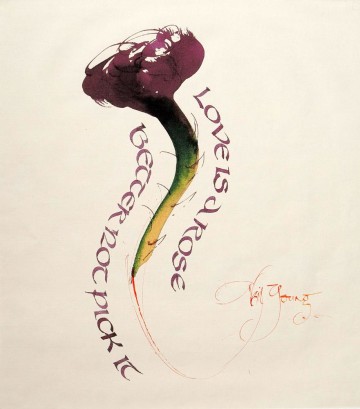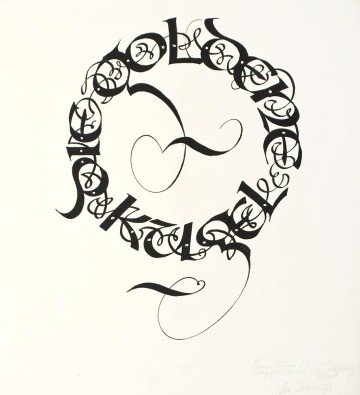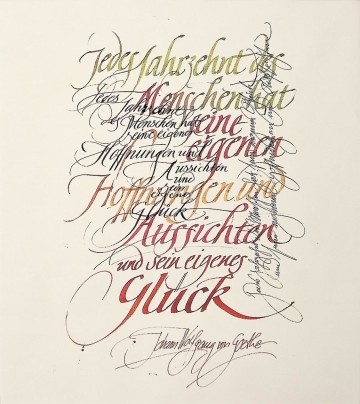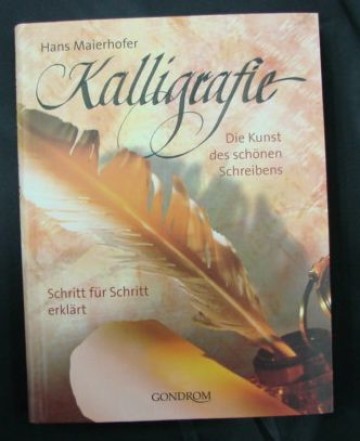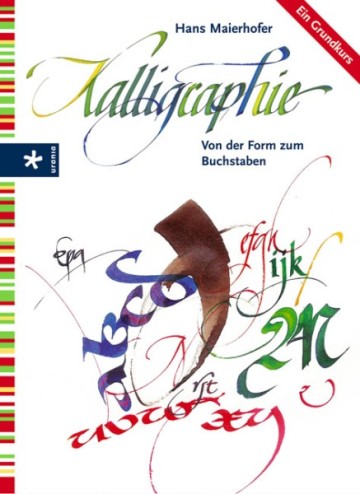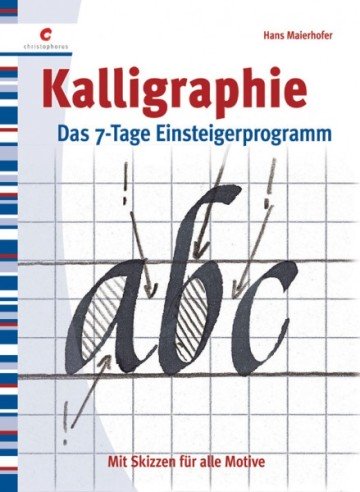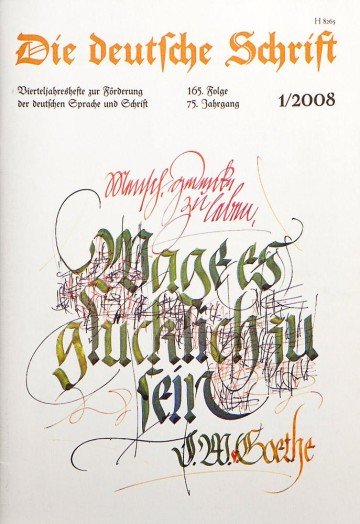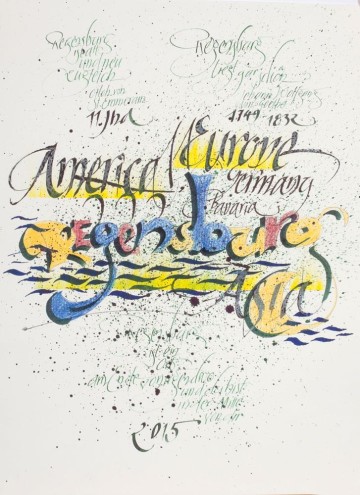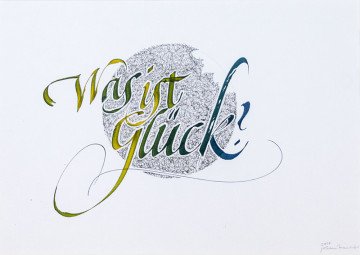马耶尔霍费尔•汉斯
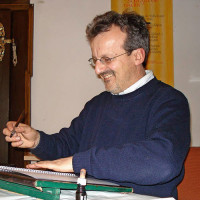
马耶尔霍费尔•汉斯
德国 雷根斯堡
书法家
Calligraphy as a movement of body and spirit
to all forms of live:
Movement.
Albert Einstein
When we write ancient alphabets, we are looking for new forms in our lives, we are singing with the nib between our fingers.
When we are more and more entrusted with what we call “calligraphy” we feel that this is more than writing words in a nice form. It can be a break in daily routine, it can be like a waterhole in Charlie Chaplin’s “modern times,” it is one way for being in the here and now: Calligraphy is one way heaven kisses the earth.
We dont’t think about this, when we sit down, take the nib and bring forms to the paper. We do it. And it is often better to do it than to think about it. But for a better doing it is sometimes necessary to think. So let’s do.
Everything around us is movement. Also when we do calligraphy. No movement, no calligraphy. You can move your body and your spirit.
Let’s talk about the movement of our body
The movement of our body in our life is the movement in the space: the height, the length and the width. And the movement in time.
As a calligrapher we have to manage the closeness and the distance of the forms. Also we have to manage pressure and release (of the nib on the paper). And also speed is important: we can work slower and we can work fast.
For the movement of the body we can train to be master of
- closeness and distance
- pressure and release
- speed and slowness
We can train this qualification without letters.
Only forms for training these skills:
We can play with the closeness and the distance of forms together.
We can modify the release and the pressure in one stroke: pressure above, below and in the middle.
We can train to move the nib very very slow, and very fast — like a racing star.
And when we manage our movements, we can use this skills in the shape of letters. Consider: during learning the letterforms, we cannot do calligraphy. It is like making music. During learning, which keys on the piano you have to press, you are not able to perform music. Not before the fingers press the keys without thinking about “which key next?” you can make music. It is the same with calligraphy: only if you know the forms of letters by heart, you can concentrate to the emotion in your executive movement.
The nib, the hand, the arm, the shoulder, the back, the pelvic, the legs, the feets, the whole body is necessary for good calligraphy. Everyone has to observe oneself, how he or she is sitting or standing while doing calligraphy.
When our whole body is prepared for calligraphy, we can do it. But what about spirit?
Johann Wolfgang von Goethe
Let’s talk about the movement of our spirit
As easy it is for us to talk about the body as unusual is it to talk about the spirit. And as a German, it is harder than for an Englishman. In German we have the word “Geist” and with the word “Geist” we label that which an Englishman differentiates with spirit, ghost and mind.
Our body we can see and feel. It is not so easy to catch the spirit.
In the way of eastern mentality the soul is the source of creation. The spirit is the process of creation and the body is the physical universe.
In calligraphy we have to tune ourselves not only with the body, we also have to tune ourselves with our spirit.
Albert Kapr (1918-1995), the great German Calligrapher from Eastern-Germany writes about the tuning of the spirit:
“The Calligrapher begins during the reaming of the ink with breathing exercices and the vacating of the head from thoughts. This exercise for concentration carries forward with accumulating the blood in the stomach (hara). Then he masterminds the impulse in the hand and makes the first stroke with an inner consensus with his whole entity.”
This is a description for a being in the here and now.
And during making a piece of calligraphy, the body and spirit have to work together. Every moment. It is like riding a bicycle downhill. You have to look, you have to decide where between the two trees in front of you it is possible to pass through. If you create a letter, an ornament, or any other stroke, first you have to decide with your mind, where to go with the body, with the nib, then you have to stop thinking and do it. And while doing the stroke, the spirit is looking for the next movement. And so on. There is no time for thinking about any other thing. It is a great adventure. It is living at its best.
When we tune our body and our spirit for calligraphy, calligraphy will tune us for life.
If someone asks: can you write me some words really quickly? We have to know (and to say) that this is not possible. We have to tune ourselves for good calligraphy. We have to tune body and spirit for a successful movement.
It is not possible to make calligraphy in passing.
I will meet you there.
Rumi
Calligraphy in space and time
We talked about Movement, Body and Spirit.
Calligraphy trains all of them. In a microcosm calligraphy shows a full life.
The boundaries of our life are space and time.
When we train
- closeness and distance
- pressure and release
- speed and slowness
we train for our being in space and time:
The closeness and the distance on the paper creates the length and the width in space.
The pressure and the release makes the height in space.
The speed and the slowness belong to time.
Thus is the movement during the calligraphy analogue to the movement in our life.
Movement in our life can be successful. Movement in calligraphy is successful. Otherwise it is not calligraphy. Don’t misunderstand me. We do not talk about right or wrong. If we are tuned for calligraphy with body and spirit and we try to do our best, we make calligraphy in our best way, and in this way it is successful.
We feel that calligraphy is not (only) for making nice papers. It can be more. It can be a way for the education of our personality.
Izzy Puldwinsky from Israel says when asked why he makes calligraphy: I do this not to become a better calligrapher – I do this to become a better person.
In this sense the mongol calligrapher Alexander Ganzorig postulates a new universe out of space and time immediately in front of us:
The idea of calligraphy goes far beyond beauty and aesthetics. It cannot be measured or judged. It can be felt and perceived. One has to unlock their hearts before the Universe, and leave all the taboos and restrictions aside. We cannot touch calligraphy. We cannot take it in our hands. Still, there is character in this art. There is a soul in it. To get an in-depth understanding of what this art is indeed, you should find another Universe, more beautiful, elegant – a universe, which is cleaner and lighter. If you can see this universe, you can experience a second birth in a more beautiful and elegant world.
